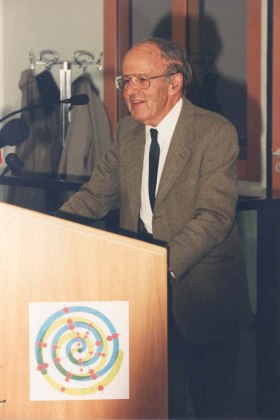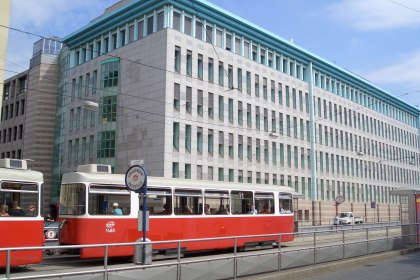Campus Vienna Biocenter
The Campus Vienna Biocenter (VBC) is one of the most important research facilities in Austria and a hot spot for life sciences in Vienna. In several architecturally striking buildings it combines several institutions. These include the Research Institute of Molecular Pathology (IMP), a foundational research center belonging to Boehringer Ingelheim, one center each from the University of Vienna and the Medical University of Vienna, as well as the Max F. Perutz laboratories (MFPL) as a joint foundation from both universities. Furthermore, two research institutes from the Austrian Academy of Sciences (ÖAW) are included, the Institute for Molecular Biotechnology (IMBA) and the Gregor-Mendel Institute of Molecular Plant Biology (GMI). An FH-course for molecular biotechnology as well as biotech-companies and institutions from the field of science communication (open science) are also located at the VBC. Altogether, more than 2000 people from over 40 countries work and study here.
The IMP in Vienna and the establishment of the “Vienna Biocenter”
The establishment of the Campus Vienna Biocenter (VBC) goes back to the 1980s and is closely related to the history of the Research Institute of Molecular Pathology (IMP).
For its two founding companies – the German pharmaceutical company Boehringer Ingelheim and the US biotech-pioneer Genentech – a strong academic environment was a prerequisite for the realization of the IMP in Vienna. Because of this, first a location in Vienna’s ninth district was considered, since most thematically related university institutes are located there. When this did not pan out, the IMP was opened in the third district (Dr. Bohr-Gasse) in 1988. At the same time, a new university building was constructed nearby with the help of the federal government as well as the city of Vienna, who had also already supported the establishment of the IMP. After it was finished in 1992, this university building housed three institutes of the Medical Faculty (biochemistry, molecular biology, molecular genetics) and two institutes of the Faculty of Natural Science (general biochemistry, microbiology and genetics) with two new professorships.
The goal was the establishment of a “Vienna Biocenter” which would not only enable a joint use of infrastructure, but also further cooperation between the IMP and the university. As early as 1993/94, a joint international PhD-program was founded – the first of its kind in Vienna. A scientific council approved by the Austrian Science Fund (FWF) provided the financial means for the university to participate. In the following years, not only new programs were started, but also new institutions were integrated into the international PhD-program at the VBC.
The “Viennese Biocenter” becomes the VBC
Since its establishment, the Viennese Biocenter has grown continuously.
In connection with the genetic engineering referendum of 1997, for example, the “Plattform Gentechnik & Wir” (“Platform Genetic Engineering & Us”) was founded, from which later the association dialog<>gentechnik (dialogue<>genetic engineering, today Open Science)
emerged. The platform built the first open laboratory in Austria, the Vienna Open Lab.
The foundation of the company Intercell, which was merged with the French corporation Vivalis in 2013 and received the name Valneva
, meant a large step forward for the VBC. Intercell was founded in 1997 by members of the university’s IMP and became the first biotech company at the Vienna Stock Exchange. This led to the construction of two new buildings at the VBC for further academic institutions. In 2000, the Institute of Structural Biology moved into the newly erected “VBC 5” and the later Department for Chromosome Biology was housed in the “VBC 2” for several years – built as a foundational center for new companies in 2004.
In 1999 and 2000 the Institutes for Molecular Biotechnology (IMBA) and Gregor-Mendel-Institute of Molecular Plant Biology (GMI) were founded, followed by the opening of the Austrian Academy of Sciences’ Life Sciences Center that housed them in 2006. That the IMBA was not only created based on the model of the IMP, but also in cooperation with it, and that both were to be closely related from the beginning, was very important for the establishment of both institutes. At the same time, the city of Vienna supported these institutes – particularly because the VBC had been developing successfully – and now presented itself as a prime location for Life Sciences.
In 2002/03 the FH-course for molecular biotechnology was started – at first on the premises of the university..
The foundation of the MFPL and the Center for Molecular Biology
Another important step in the history of the VBC was the establishment of the Max F. Perutz Laboratories (MFPL, renamed Max Perutz Labs Vienna in 2019).
After the university institutes had been relocated to the Dr. Bohr-Gasse, structural reforms were repeatedly discussed that aimed to improve resource management, enable faster decisions and a unified presentation to the public. When the Medical Faculty was converted into its own university in the course of the University Law of 2002 (UG) these reforms were finally implemented. It was important that at the VBC, where institutes of the Medical Faculty and the Faculty of Natural Sciences were located, the academic dividing line led through the building. It also had to be decided where to locate a funded professorship for bioinformatics from the WWTF that the “consortium Dr. Bohr-Gasse” (with both universities participating) had applied for.
To connect their institutions at the VBC, the universities created the MFPL (as a private limited company) in 2005 and gave it several tasks: research at, and operation and administration of the premises allocated to it, as well as the establishment of a research unit for bioinformatics by creating the Center for Integrative Bioinformatics (CIBIV).Regarding the personnel, a joint director and administration were put into place, but also ten groups of young researchers were hired. The foundation of the MFPL led to a strengthening of inter-university cooperation, thereby also creating a new “brand”, making the universities more visible at the VBC and facilitating the cooperation with the non-university institutions. But at the same time, it was also connected to an investment into young researchers.
In 2007, another administrational reform followed with the establishment of the Center for Molecular Biology.
Here, the different groups working on molecular biology at the University of Vienna were combined at the VBC, after they had been divided into two faculties in the preceding years (life sciences, chemistry). The institutes belonging to the Medical Faculty had already merged into the Institute for Medical Biochemistry in 2000. This was transformed into the Department for Medical Biochemistry in 2004.
Recent developments
The recent years at the VBC have been marked by the completion of three new buildings (Intercell building 2008, Solaris building 2008, Marxbox 2011/12), as well as by the foundation of the Campus Science Support Facilities GmbH, which is meant to ensure access to modern infrastructure for the Campus in the future. Its development across institutions and its establishment in 2010 meant an important step in the cooperation between the different actors at the VBC.
-
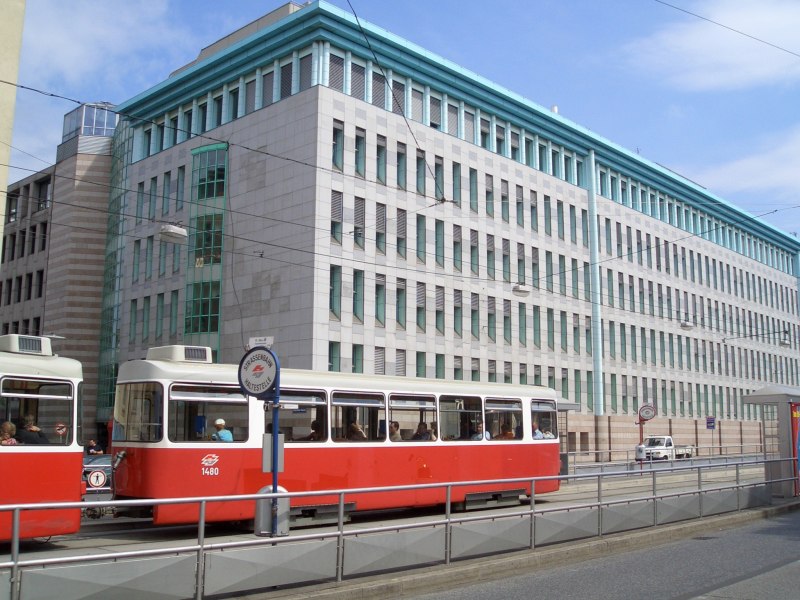
Das 1992 eröffnete Universitätsgebäude des Campus Vienna Biocenter (VBC) an der Ecke Dr. Bohr-Gasse/Rennweg
-
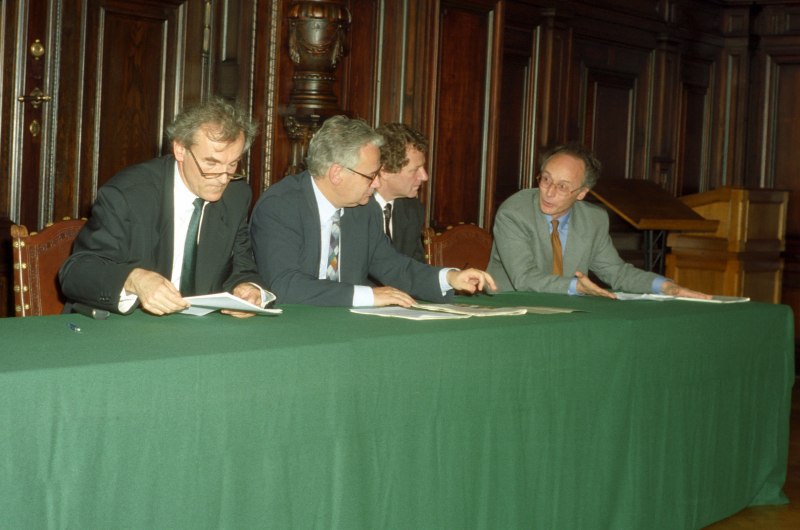
Eröffnung des ersten Wissenschaftskollegs 1994 als Vorläufer der späteren Doktoratskollegs, von rechts nach links: FWF-Präsident Arnold Schmidt, Wissenschaftsminister Erhard Busek, Rektor Alfred Ebenbauer, Univ.-Prof. Helmut Ruis
-
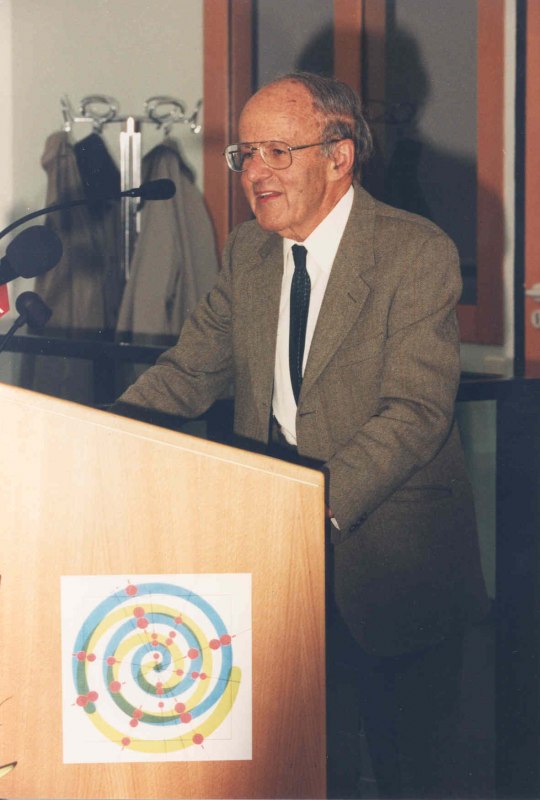
Der aus Österreich stammende Nobelpreisträger Max F. Perutz, nach dem die Max Perutz Labs Vienna benannt wurden, bei einem Besuch am Campus Vienna Biocenter (VBC) 1995.
-
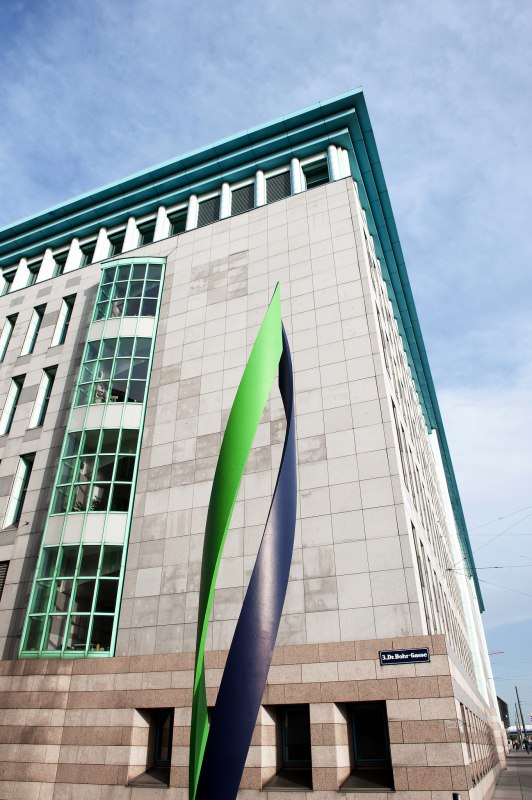
Gebäude der Max Perutz Labs Vienna (vormals Max F. Perutz Laboratories GmbH) im Campus Vienna Biocenter, 2013
Last edited: 04/04/24


